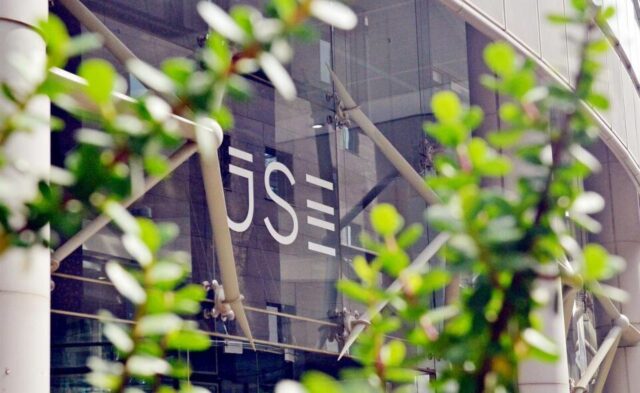MARKETS ON MONDAY: It seems that markets had discounted the greylisting event of a week ago and foreign portfolio investment capital seems to return to share and bond markets, writes Chris Harmse.
By Chris Harmse
ON THE JSE the ALSI ended last week 1.7% higher, the rand gained more than 51 cents on Friday alone and closed after hours on R17.74 cents against the US/$ (gaining 67 cents last week) and the gold price surged by $53 per ounce over the last five days, to close Friday in New York on ($1,856).
It seems that markets had discounted the greylisting event of a week ago and foreign portfolio investment capital seems to return to share and bond markets.
South Africa now awaits the announcement of StatsSA this coming week of the economic growth rate during the fourth quarter of 2022, as well as for the whole of 2022.
Global financial markets now focus not anymore on if but on how much higher interest rates might go in the US and eurozone, with swaps markets now pricing a peak Fed policy rate of 5.5% in September, and some even betting on 6%.
The hawkish stance of Federal Reserve of the US causes volatile and uncertain movements on global equity, bond, and foreign exchange markets. It led to equity markets recording its worst month over the last six months.
During February the global market index lost 3%. US indices were also down between 2.2% and 3.2%. The EMG Mkts Stocks lost 6.7%, commodities (GSG) traded down by -4.2%, US bonds were weaker by 2.7%, the gold price was down by -5.4$ and the US dollar index gained 3.3%.
On the local front, the rand depreciated during February 2023 with 127 cents against the US$ to R18.32/$, while the ALSI lost 1.7%. Inflation remains high in most countries, whilst a possible recession looming in Europe, the UK, and South American countries. Global markets now awaits the release of the US non-farm payrolls this coming Friday and the next interest rate decision by the FED on 30 March.
On Wall Street equities started to recover last week after the miserable February.
The hawkish mood of the FED has been discounted and expectations of increased growth in the service sector, higher Purchasing Managers Indices (PMI) and retail sales boost expectations that the US economy will not move into recession and company earnings should improve.
The Dow Jones industrial index ended the week 1.17% higher, the S&P500 gained 1,61% and the NASDAQ increased by 2.0%.
StatsSA announced last week South Africa’s unemployment rate came down for the third consecutive quarter during the fourth quarter. The jobless rate had fallen from 32.9% (Q3) to 32.7%(Q4) and is now 2.6% lower than the 53.3% during Q4 2021.
The welcoming fact of the latest release indicates that although the South African labour force has increased by 1,222,000 over the last year, the economy was able to create 1,390,000 new jobs. This brought the number of unemployed down by 168,000 from Q4 2021 to Q4 2022.
This coming week investors and analysts will await the release of South Africa’s economic growth rate Q4 2022 and for 2022, on Wednesday. It is expected that the economy grew by 2.2% for the whole 2022, although it had shrunk by -0.4% during Q4 2022.
The annual rate will be positive for South African markets. The Reserve Bank will publish its March 2023 quarterly bulletin on Thursday.
The market will await the stance of the current account of the balance of payments.
It is expected that the deficit had increased sharply during Q4 2022 to R176 billion from R18bn in Q3 2022.
On global markets the testimony of FED chair Jeremy Powell to the senate on Tuesday and Wednesday will set the tone for global markets. The release of the US non-farm payrolls this coming Friday however will be the middle of attention this week.
The number of new jobs that the US economy created in February 2022 is expected to be 200 000. This is much less than the unexpected 517,000 in January.
If this is higher and contributes to the US unemployment rate to remain less than 3.5%, markets will discount a certain increase in the FED’s bank rate at their next meeting on 30 March 2023.
* Chris Harmse is the consulting economist of Sequoia Capital Management.
– BUSINESS REPORT








